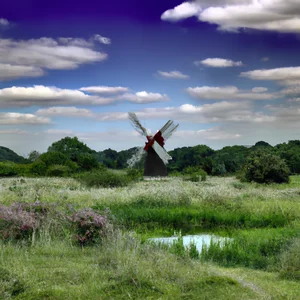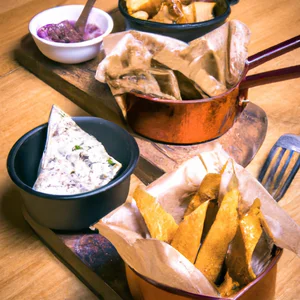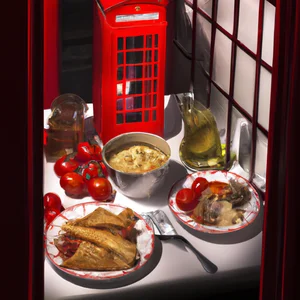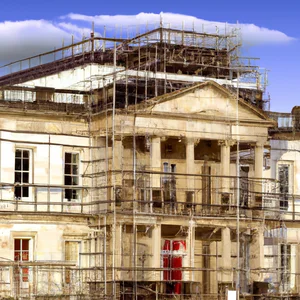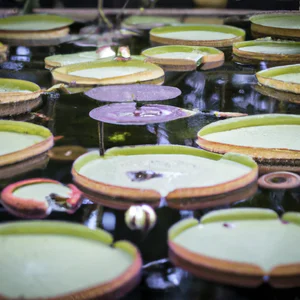Book your experience
British Museum: guide to the unmissable treasures of the most visited museum in the United Kingdom
The British Museum is truly a gem, and believe me, if you’re around the UK, it’s a place you just can’t miss! It’s the busiest museum in the country and, well, there must be a reason, right? I tell you, there are so many treasures to see that you risk getting lost. But don’t worry, here’s a little guide to help you navigate all those wonders.
So, to begin with, you can’t help but take a look at the Rosetta Stone. It’s like the Holy Grail for history buffs, a real key to deciphering ancient Egyptian. The first time I saw it, I thought, “Man, how big it is!” And yes, I felt a little small in the face of such an epochal thing.
Then, there is the famous collection of mummies. I warn you, it’s not for the faint of heart! It’s fascinating, sure, but it also makes you think about how strange the concept of immortality is. Every time I pass by, I’m reminded of the time I tried to role-play with friends in Egyptian costumes. A disaster, but we had a lot of fun!
And let’s not forget the friezes of the Parthenon. It’s like having a piece of Athens right in the heart of London. I don’t know if you’ve ever looked at a work of art and felt that it spoke to you directly, but with these friezes it happened to me. I think ancient art has a kind of magic, a way of connecting you to those who were there before us.
But wait, there’s more! The section dedicated to Assyrian culture is a journey through time. The winged lion sculptures, for example, are so impressive that they make you feel like you’re in an epic movie. And who knows, maybe one day I’ll write a story inspired by those fantastic creatures!
Ultimately, the British Museum is a labyrinth of history and culture. Sure, it can feel a little overwhelming at times, but trust me, you just need to take your time. Maybe take a map, or an audio guide, so you don’t get lost among the various rooms. And who knows? You might even discover a treasure you weren’t expecting at all.
In short, if you have the chance, go and take a look. And don’t forget to bring a nice pair of comfortable shoes, because there are a lot of steps to do! And who knows, maybe you’ll see something that will make you say, “Man, I’ll never believe that!”
Secrets of the Rosetta Stone
An enlightening meeting
I remember the first time I saw the Rosetta Stone: my heart raced as I approached that iconic monument, shrouded in an aura of mystery and history. It was a quiet morning at the British Museum, and natural lighting filtered softly through the windows, accentuating the details of this extraordinary artefact. The Stele, with its three inscriptions in three different languages, represents not only a key to deciphering ancient Egyptian, but also a symbol of connection between different cultures.
Practical information
Located in Hall 4 of the British Museum, the Rosetta Stone is one of the focal points for visitors. It is advisable to plan your visit during weekdays to avoid the weekend crowds. The museum is open every day from 10am to 5.30pm, with evening openings on Fridays until 8.30pm. For further details, visit the museum’s official website British Museum.
An insider tip
Few know that the museum offers thematic guided tours, including one specifically on the Rosetta Stone. Booking a private tour will allow you to explore the artefact with an expert, revealing little-known details and fascinating stories you might otherwise miss.
Cultural and historical impact
The Rosetta Stone, discovered in 1799, has had an extraordinary impact on the study of Egyptian history. By allowing Jean-François Champollion to decipher hieroglyphics, he opened the door to a deeper understanding of ancient Egypt and influenced the way we perceive culture and language. This artifact is not just a piece of stone; it is a bridge between the past and the present, which continues to inspire scholars and history enthusiasts.
Sustainability and responsible tourism
The British Museum is committed to promoting sustainable tourism practices. Part of your entrance fee contributes to collection conservation and research, ensuring that future generations can continue to explore these treasures. It is important that visitors respect the rules of the museum and contribute to a sustainable learning environment.
An immersion in history
Imagine finding yourself in front of that stele: the engravings that tell stories of a distant past, the light that dances on ancient surfaces. It is an almost magical moment, in which time seems to stop and history comes to life. The Rosetta Stone is not just an artifact; it is an experience that invites reflection and wonder.
An activity worth trying
After admiring the Stele, I recommend you explore the section dedicated to ancient Egypt. Here you can see other artifacts that tell the stories of mummies and daily life in ancient Egypt. Don’t forget to stop by the museum shop to purchase a book on the subject, which will allow you to further deepen your knowledge.
Myths and misconceptions
A common misconception is that the Rosetta Stone is the only artifact that allowed hieroglyphics to be deciphered. In reality, it represented a starting point, but many other documents and finds contributed to completing the picture. It is important to recognize the collective work of scholars and archaeologists in revealing the richness of Egyptian history.
Final reflection
The Rosetta Stone invites us to consider the power of intercultural communication and understanding. What hidden history do you think we might still discover in the world around us? The next time you come across a historical artifact, ask yourself what secrets it might reveal.
The beauty of the mosaics of Antioch
An unforgettable meeting
During my visit to Antioch, one of the most fascinating cities in Turkey, I was enchanted by the mosaics that adorn the Antioch Museum. A particular mosaic, representing a banquet, struck me with its liveliness and details so refined that they almost seem to be in movement. Observing the facial expressions and bright colors, I felt I was transported back in time, to a time when art was not just a form of expression, but a way to tell stories and celebrate life.
Practical information
The Museum of Antioch, located a short walk from the city center, houses one of the largest collections of Roman mosaics in the world. With over 3,500 square meters of mosaics, many from ancient Roman villas, this museum is a true gem. It is open every day from 8:00 to 19:00. I advise you to purchase your ticket in advance on the official website to avoid long waits. (Source: Museum of Antioch)
An insider tip
If you really want to immerse yourself in the local culture, try joining a guided tour led by a local expert. These tours will not only provide you with fascinating historical details, but will also take you to lesser-known corners of the museum. Also, ask to see the “Lion Hunt” mosaic in a less frequented area - it’s a true masterpiece that often escapes tourists.
The cultural impact of mosaics
The mosaics of Antioch are not just works of art; they are windows into a rich and complex history. This city, a crossroads of cultures, has seen the passage of Greeks, Romans and Byzantines. Each mosaic tells a story, reflecting the influences of these different civilizations and the importance of art as a means of communication and cultural identity. The beauty of these mosaics continues to inspire artists and historians, highlighting their relevance also in the contemporary context.
Sustainability and responsible tourism
When you visit the museum, remember to respect sustainable tourism practices. For example, avoid touching works of art and always follow staff instructions. Not only will you contribute to the conservation of the mosaics, but you will also promote responsible tourism that protects cultural heritage for future generations.
An unmissable experience
For an even more engaging experience, I recommend taking part in a mosaic workshop. These courses, often organized by local artists, will allow you to create your own mosaic inspired by the masterpieces you’ve seen, making your visit to Antioch even more memorable.
Myths and misconceptions
A common misconception is that mosaics are just decorations. In fact, many of them have deep meanings and tell stories of mythology, religion and everyday life. Don’t just observe them; try to understand the context and narratives.
Final reflection
Looking at the mosaics of Antioch, I asked myself: how many stories have been told through art over the centuries? Each tile, each figure, is a piece of a historical puzzle that continues to speak to those willing to listen. The next time you find yourself in front of a work of art, ask yourself what stories it hides and what voices from the past continue to resonate in the present.
Discover Egyptian mummies and their stories
A close encounter with the past
The first time I saw an Egyptian mummy on display in the British Museum, my heart raced. The atmosphere was full of mystery, almost palpable. As I observed the body wrapped in linen bandages, I felt transported back in time, to a time when the afterlife was a central theme in the daily lives of the ancient Egyptians. The mummy, dating back more than 3,000 years, told a story of life, death and veneration, a story that only a lucky few get to hear.
A journey through time
Visit the Egyptian mummies section of the British Museum, where you can admire extraordinary specimens such as that of Nesperennub, a priest of Amun, which offers an intimate look at the rituals and beliefs of ancient Egypt. To obtain updated information and details on exhibitions, consult the museum’s official website or follow their social profiles, where updates on exhibitions and special events are regularly published.
An insider tip
Unconventional advice? Take a guided night tour. These exclusive experiences will not only allow you to experience the museum in an evocative and less crowded atmosphere, but often include stories and curiosities that are not available during daytime visits. Don’t forget to book in advance, as these events tend to sell out quickly!
The cultural impact of mummies
Mummies are not just preserved bodies; they are bearers of a profound cultural heritage. They represent the spiritual beliefs and funerary practices of a civilization that influenced the world for millennia. The obsession with immortality and preparation for the afterlife marked not only Egyptian art and architecture, but also the way subsequent cultures conceived of life and death.
Responsible and sustainable tourism
When visiting the Egyptian section of the museum, consider the importance of sustainable tourism practices. Choose to use public transport to reach the museum and always respect the heritage conservation rules. Every small gesture counts in the protection of these precious historical testimonies.
Immerse yourself in the atmosphere
Imagine walking through the rooms of the museum, surrounded by antiquities that tell stories of gods, pharaohs and rituals. The vibrant colors of the sarcophagi, the delicacy of the hieroglyphs and the air full of history create an atmosphere that invites contemplation. Each mummy is a window onto a distant past, an invitation to reflect on the fragility of life and the eternity of memory.
An experience not to be missed
Don’t miss the opportunity to participate in one of the mummification demonstrations, when available. These events offer an enlightening interactive experience that reveals the secrets of ancient conservation techniques. It’s a unique way to get closer to Egyptian culture and better understand their worldview.
Myths to dispel
It is often thought that mummies are just bodies wrapped in bandages, but in reality, each mummy is a treasure trove of archaeological and historical information. The mythical “curses” linked to mummies are more the result of popular fiction than historical reality; the Egyptians had no interest in cursing future visitors to their tombs.
A final reflection
After exploring the history of Egyptian mummies, I invite you to reflect: what do these ancient practices teach us about our vision of mortality and memory? The stories that these mummies carry with them are a bridge between past and present, an invitation to honor the memory of those who came before us.
Chinese treasures: the mystery of bronze
A life-changing encounter
I still remember my first visit to a museum dedicated to Chinese culture, an experience that completely captivated me. I was admiring a stunning bronze statue, its polished shine reflecting the light in ways that seemed to dance. It was an ancient sculpture dating back to the Zhou Dynasty, and as I looked at it, I wondered what story was behind that piece of art. Chinese bronze works are not simply objects; they are witnesses to an era in which art and technology intertwined in a way that continues to amaze scholars.
Practical and up-to-date information
Today, the National Museum of China in Beijing houses one of the most comprehensive bronze collections in the world. With over 120,000 pieces, this facility offers a journey through Chinese dynasties, revealing the evolution of casting and decoration techniques. It’s best to visit during the week, when crowds are smaller, for a more intimate experience. Be sure to check the museum’s official website for any temporary exhibitions or special events, as they often feature rare works from private collections.
An insider tip
For a truly unique experience, I recommend taking part in a bronze casting workshop organized by local artisans. Not only will you have the opportunity to see the process up close, but you can also try your hand at creating your own little bronze piece. This is a fantastic way to understand the work and dedication behind these artistic wonders.
The cultural impact of bronze in China
Bronze art has had an indelible impact on Chinese culture. During the Shang and Zhou dynasties, bronze sculptures and utensils were not only decorative, but also served ritual and commemorative purposes. These works tell stories of power, religion and everyday life, acting as a bridge between past and present. Their importance is such that many of them have been included in the Cultural Heritage of Humanity by UNESCO.
Sustainability and responsibility in tourism
When visiting museums and art studios, it is essential to adopt responsible practices. Choosing tours that support local artisans and promote the preservation of cultural heritage is one way to positively contribute to the community. Many bronze workshops in Beijing are run by local families who practice traditional casting methods, and your support can make a big difference.
An unmissable activity
In addition to visiting the museum, don’t miss the opportunity to explore the Panjiayuan Antiquities Market, where you can find replicas of bronze works and other Chinese treasures. Here, among the crowded stalls and passionate vendors, you can immerse yourself in Beijing’s vibrant atmosphere and perhaps take home a piece of history.
Myths to dispel
Many mistakenly believe that Chinese bronze works are all of high value. In fact, there are many modern replicas and pieces that can be purchased at affordable prices. The important thing is to inform yourself and always ask for certification of authenticity, especially in crowded markets.
A final reflection
Every time we immerse ourselves in history through art, as in the case of Chinese bronze treasures, we can’t help but ask ourselves: What is the message these works are trying to convey? The beauty of bronze goes beyond its I wait; it is a window into a rich and complex culture that continues to influence the entire world. Will you be able to discover the mystery behind these extraordinary treasures?
Exclusive tip: visit the museum at unusual times
A chance meeting
I still remember my visit to the British Museum, when I decided to take advantage of the extraordinary opening hours. It was a Friday evening, and while most tourists crowded into the neighborhood restaurants, I found myself in the heart of the museum, surrounded by thousand-year-old works of art. The atmosphere was surreal; the Egyptian statues and Roman mosaics seemed to tell their stories in a whisper, while silence enveloped the rooms illuminated by soft lights. This is a moment I would never have experienced during the day, amidst the buzz of the crowd.
Unusual hours and benefits
Visiting at unusual times, such as Thursday and Friday evenings, when the museum is open until 8.30pm, is an experience I highly recommend. Not only do you avoid the crowds, but you also have the opportunity to participate in special events, such as conferences and dedicated guided tours. For updated information, you can consult the official website of the British Museum, where you will find details on opening times and scheduled events.
An insider tip
Here’s a secret that few know: during evening openings, the museum often offers access to exclusive areas, such as the room dedicated to the Rosetta Stone, where you can observe this extraordinary artifact up close without the barriers of the day. Bring a notebook, as you may have the opportunity for notes or reflections that make your visit even more personal.
Cultural impact
The ability to explore the British Museum in quiet moments allows you to reflect on the cultural and historical impact of its collections. This museum is not just a place of exhibition, but a guardian of collective human memory, a bridge between different cultures. The Rosetta Stone, for example, is not just an object; it is the symbol of the decipherment of a lost language and the connection between civilizations.
Sustainability and responsibility
In an era where responsible tourism is crucial, the British Museum is committed to promoting sustainable practices. Visiting at unusual times also means contributing to a more balanced distribution of tourist flows, reducing the environmental impact. Furthermore, the museum has launched initiatives to reduce its ecological footprint, such as the use of renewable energy and sustainable resource management.
An unforgettable experience
To make your visit even more memorable, attend a special evening event, such as a thematic guided tour or lecture. These events often offer access to curators and art historians who can share unique insights into the collections. Don’t forget to take some photos, but remember to fully immerse yourself in the moment.
Myths to dispel
A common misconception is that museums are boring or unengaging. In fact, the experience of visiting the British Museum at unusual times can prove deeply emotional and stimulating. The absence of crowds allows you to truly connect with the artwork, be inspired, and appreciate the beauty that surrounds you.
A final reflection
When was the last time you had a museum experience without the noise and bustle of the day? We invite you to consider how powerful and transformative a visit at unusual times can be. What stories could works of art tell you if you had time and space to listen to them?
Greek art: a journey among the fragments
A Personal Beginning
I still remember my first visit to the British Museum, when I found myself in front of the fragile remains of Greek sculptures. The soft lights of the museum reflected on these ancient fragments, telling stories of gods and heroes. A group of enthusiastic and curious schoolchildren had gathered around a partial statue of Athena; their questions vibrated in the air, making that moment almost sacred. It is in these moments that the power of Greek art is perceived, an art that transcends time and space.
A Priceless Heritage
The British Museum houses one of the most important collections of Greek art in the world, with works ranging from the Archaic period to Hellenism. The famous sculptures of the Parthenon, including the fragments of the metopes and the statues of the pediments, offer a privileged glimpse into the mastery of the artists of the time. For those who want to find out more, I recommend you consult the museum’s official website, where you will find updated and detailed information on exhibitions and events.
An Insider Tip
A little-known trick to having a more intimate experience with Greek art is to visit the museum during the early hours of the morning, right after it opens. Not only will you have more space to contemplate the works, but you will also have the opportunity to listen to the curators during the question and answer sessions which are held regularly at this time. A perfect way to learn directly from those in charge of the works.
Cultural Reflections
Greek art has a lasting impact on Western culture, influencing everything from philosophy to architecture. Its values of beauty, proportion and harmony continue to inspire artists and thinkers today. Contemplating these fragments allows us to understand not only the history of a people, but also the way in which their vision of the world has shaped ours.
Sustainability and Responsible Tourism
When you visit the British Museum, I encourage you to consider sustainable tourism practices. For example, use public transport to reach the museum and, if possible, take part in guided walking tours. This not only reduces the environmental impact, but also allows you to discover hidden corners of London, further enriching your experience.
Immersion in the Atmosphere
Imagine finding yourself immersed in an atmosphere of contemplation, surrounded by statues that seem to come to life, dancing in a continuously changing light. Every fragment tells a story, every scar on the stone is a memory of bygone eras. It is an invitation to reflect on what remains of us when time passes.
An activity not to be missed
I recommend you take part in a Greek art workshop, where you can try to create your own sculpture inspired by the works on display. These hands-on experiences are often available and provide a tangible way to connect with art.
Myths and Misconceptions
A common misconception is that Greek art is only synonymous with perfect statues. In reality, the beauty of Greek art also lies in its flaws and imperfections, which tell stories of life, war and faith. These human aspects are what make art so vibrant and real.
A Final Reflection
After having such a rich experience, I wonder: how does Greek art continue to influence our lives daily? Maybe it’s time to explore not only the exposed fragments, but also the fragments of beauty that surround us every day.
Behind the scenes: the history of the collections
A personal experience that opens the doors of the museum
I remember my first visit to the British Museum, a clear spring day. As I explored the rooms, I came across a small group of visitors, all mesmerized by a curator telling fascinating stories behind the collections. It was as if I had opened a secret door, a privileged access to a world of knowledge and passion. His narrative was not just about the objects, but also about the lives of the people who collected and preserved them. From that moment, I understood that the museum is not just a container of artefacts, but a place alive with human interactions.
The history of the British Museum’s collections
The British Museum, founded in 1753, boasts one of the richest collections in the world, the result of centuries of exploration and curiosity. Today, his collection includes over eight million objects, each with a unique story. Many visitors are unaware that the museum also houses objects from donations and archaeological discoveries, not just from colonial explorations. This aspect makes the museum a crossroads of cultures and histories, where each piece tells a chapter of human history.
An insider tip
If you want a truly unique experience, ask to take part in one of the thematic guided tours offered by the museum. These tours, often led by expert curators, not only delve into the collections, but also offer anecdotes and insights that you won’t find on normal tours. Also, follow their social media profile to find out about special events or temporary exhibitions that may not be advertised.
The cultural impact of collections
The history of the British Museum’s collections is not without controversy. Many objects, such as the famous Benin bronzes, raise questions about restitution and the ethics of collection. This discussion is fundamental to understanding the role of museums in the modern world. The British Museum is now working to address these issues, promoting an open and collaborative dialogue with the cultures of origin.
Sustainable tourism practices
The museum is committed to promoting sustainable practices, not only in the conservation of its collections, but also in how it interacts with visitors. Participating in events that promote local art and culture is a great way to contribute to this effort. Be sure to find out about events that encourage community participation and reduce environmental impact.
An activity not to be missed
I recommend you visit the section dedicated to ancient Egypt, where you can admire the famous Rosetta Stone and Egyptian mummies. Attend one of the museum’s restoration demonstrations, an experience that will allow you to see up close how experts preserve these treasures.
Myths and misconceptions
A common misconception is that the British Museum is just a place for tourists. In fact, it is a vibrant center of research and learning. Often, London residents actively participate in events and discussions, making the museum a cultural meeting place.
A final reflection
After exploring the secrets of the collections, I invite you to reflect: what stories do the objects that surround us tell us every day? Every visit to the museum is not just a journey into the past, but an opportunity to reconsider our present and our future. What impact do objects have on our cultural identity? The answer may surprise you.
Commitment to sustainability at the British Museum
An enlightening discovery
I still remember my first visit to the British Museum, surrounded by countless historical treasures. But what caught my attention was not just the magnificence of the collections, but a small corner dedicated to the commitment to sustainability. While exploring the exhibition, I had the opportunity to speak with one of the curators, who revealed how the museum is trying to reduce its ecological footprint. It was fascinating to discover that each object, in addition to telling a story, is also part of a larger dialogue about our duties towards the planet.
Practical information
The British Museum, famous for its vast collection, has recently introduced innovative practices to promote sustainability. For example, the museum uses LED lighting systems that reduce energy consumption and has started a recycling program for materials used in exhibitions. You can find further details on these initiatives by visiting the museum’s official website British Museum Sustainability, where regular updates are published.
An insider tip
If you want a truly unique experience, I recommend taking one of the sustainability-themed tours that the museum offers sporadically. These tours will take you behind the scenes, revealing how sustainable practices influence the conservation of collections and how the museum interacts with the public. It’s a rare opportunity to see the museum from a completely new perspective, far from just the artistic wonders.
The cultural impact
The British Museum’s commitment to sustainability is not just an environmental issue; it also reflects a broader cultural shift. At a time when the world is increasingly aware of ecological challenges, the museum stands as an example of how cultural institutions can contribute to a more sustainable future. This approach not only preserves heritage for future generations, but also invites visitors to reflect on their role in this process.
A vibrant atmosphere
Walking along the halls of the museum, you can feel an atmosphere of respect and responsibility. Each step reminds you that treasures are not just exhibits, but represent a connection between the past and a future that we hope to make better. The museum’s sustainability initiatives are a reminder that even historic institutions can evolve and adapt to contemporary needs.
A hands-on experience
For an interactive experience, try to attend one of the environmental education workshops organized by the museum. These events will allow you to explore sustainability through hands-on activities and give you the chance to contribute to meaningful discussions about how we can all make a difference.
Myths to dispel
A common misconception is that museums, being historic places, cannot adapt to the new challenges of the modern world. In reality, the British Museum demonstrates how tradition and innovation can coexist, creating a reference model for other institutions.
A personal reflection
As I left the museum, I asked myself: How can we integrate a commitment to sustainability into our daily lives? Every visit to the British Museum is not only a journey through time, but also an invitation to reflect on our present and future impact . I invite you to consider how the stories told through the museum’s treasures can inspire you to become a more conscious custodian of our shared heritage.
A local experience: events and temporary exhibitions
When I visited the British Museum last time, I came across a temporary exhibition dedicated to contemporary African art. I couldn’t believe my eyes: extraordinary works that told stories of identity, struggle and hope. A local artist, who I had not known until then, had exhibited a series of installations that transformed the concept of museum space into an active dialogue with the public. That visit turned into an emotional and personal experience, a taste of what the museum can offer beyond its permanent collections.
Events and Temporary Exhibitions: A Vortex of Culture
The British Museum is not just a place for storing historical treasures; it is also a vibrant center of cultural events and frequently changing temporary exhibitions. I recommend you check their official website for the latest news. Exhibitions can range from emerging artists to celebrations of different cultures, and each visit can prove unique and surprising.
- Practical information: To stay updated on current events, visit the “Events” section of the British Museum website. Some exhibitions require reservations, so it’s always best to plan ahead.
Insider advice
If you want an even more immersive experience, try to attend one of the workshops or conferences organized by the museum. These events will allow you to not only learn from the curators, but also interact with other visitors and the art directly. Please note that some events are free, while others may require a small fee.
The Cultural Impact of Temporary Exhibitions
Temporary exhibitions at the British Museum have a significant impact on understanding and appreciation of the cultures represented. They offer a platform for artists and curators from around the world, helping to create an intercultural dialogue. This is especially important in a time when the connection between different cultures is fundamental to our collective future.
Sustainability and Responsibility
In an age where sustainable tourism is more crucial than ever, the British Museum is taking significant steps in this direction. Temporary exhibitions often include works made with recycled materials or sustainable practices, raising visitors’ awareness of the importance of environmental responsibility in art too.
Immerse yourself in the Atmosphere
Imagine walking among vibrant works of art, surrounded by a mix of locals and tourists. Every corner of the museum tells a story, and the temporary exhibitions add a new dimension to this tale. Don’t be afraid to stop and interact with the artists or curators; their passion is contagious!
Recommended Activities
When you’re at the museum, consider taking a guided tour of the temporary exhibits. Not only will you have access to in-depth information, but you will also be able to ask questions that will enrich your experience. Also, don’t forget to visit the museum shop – they often have unique items inspired by current exhibitions.
Myths and Misconceptions
A common misconception is that temporary exhibitions are less significant than permanent collections. In reality, these exhibitions are often the result of in-depth research and can offer fresh and provocative insights into contemporary and historical topics.
Final reflection
After visiting a temporary exhibition, I invite you to reflect on how art influences your daily life. How can the stories told through these works change your point of view? The British Museum is a place where history and art are intertwined, and each visit has the potential to open new doors in your understanding of the world. Don’t miss this opportunity to be part of a larger conversation.
The cultural impact of African art in the museum
An unexpected encounter
I still remember the moment I found myself in front of an African mask, exhibited at the British Museum. Its surface, covered in bright colors and intricate symbols, seemed to tell stories of an ancient and vibrant culture. As I watched, a museum custodian approached and began to tell the story of the mask, describing how it was used during dance ceremonies. That chance meeting opened my eyes to the importance of African art and its fundamental role in the global cultural context.
Practical information
The British Museum offers a large collection of African art, with works from different regions of the continent. The section dedicated to African art is easily accessible and well signposted, but I recommend you visit the museum’s official website for any updates on opening hours and special events. It is also possible to book guided tours to learn more about these extraordinary works.
An exclusive tip
If you want a truly unique experience, try visiting the museum during the early hours of the morning, when tourist groups are still absent. This way you can admire the works in peace, letting yourself be enveloped by the mystical atmosphere of the sculptures and masks. Also, pay attention to the small information sheets that accompany the works: they often contain fascinating details that you wouldn’t find in tourist guides.
The cultural impact of African art
African art has had a significant impact on world history and culture. Its expressive forms have influenced artistic movements such as cubism and surrealism, while traditional techniques continue to inspire contemporary artists. African works are not just objects to be admired, but tell stories of community, spirituality and identity, contributing to an essential intercultural dialogue.
Responsible tourism practices
When you visit the museum, consider taking tours that promote cultural awareness, supporting initiatives that help African communities. Many museums collaborate with local artists and artisans, offering a platform for their works and cultural practices, thus ensuring more sustainable and respectful tourism.
Immersion in the atmosphere
Imagine walking through the galleries, surrounded by an air of reverence and curiosity. Works of African art not only adorn the walls, but also seem to whisper secrets of a rich and complex past. Each mask, each figurine, tells a story of pride and resistance, inviting you to discover a world far away but incredibly close.
A recommended activity
After exploring the African art section, consider attending an African art workshop taught by local artists. These events often offer the opportunity to learn traditional crafting techniques and better understand the cultural meaning behind the works.
Addressing the myths
A common misconception is that African art is homogeneous and lacks diversity. In reality, the continent is home to a vast array of cultures, each with its own artistic traditions, styles and meanings. It is therefore essential to approach these works with an open mind, ready to explore the richness and complexity of African artistic expressions.
Final reflection
After exploring the world of African art, I invite you to reflect: how much of what we know today has been influenced by cultures other than ours? Art is a bridge that unites people, and each work offers us the opportunity to better understand the world and its varied fabric. What stories will you take with you?

 Architecture and Design
Architecture and Design Cities and Regions
Cities and Regions Culture and History
Culture and History Events and Festivals
Events and Festivals Fashion and Shopping
Fashion and Shopping Food and Wine
Food and Wine Nature and Adventure
Nature and Adventure Unique Experiences
Unique Experiences



















